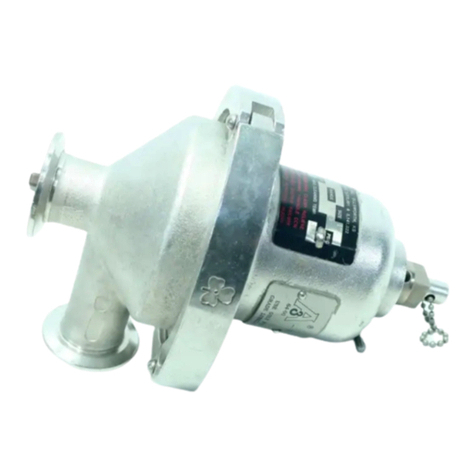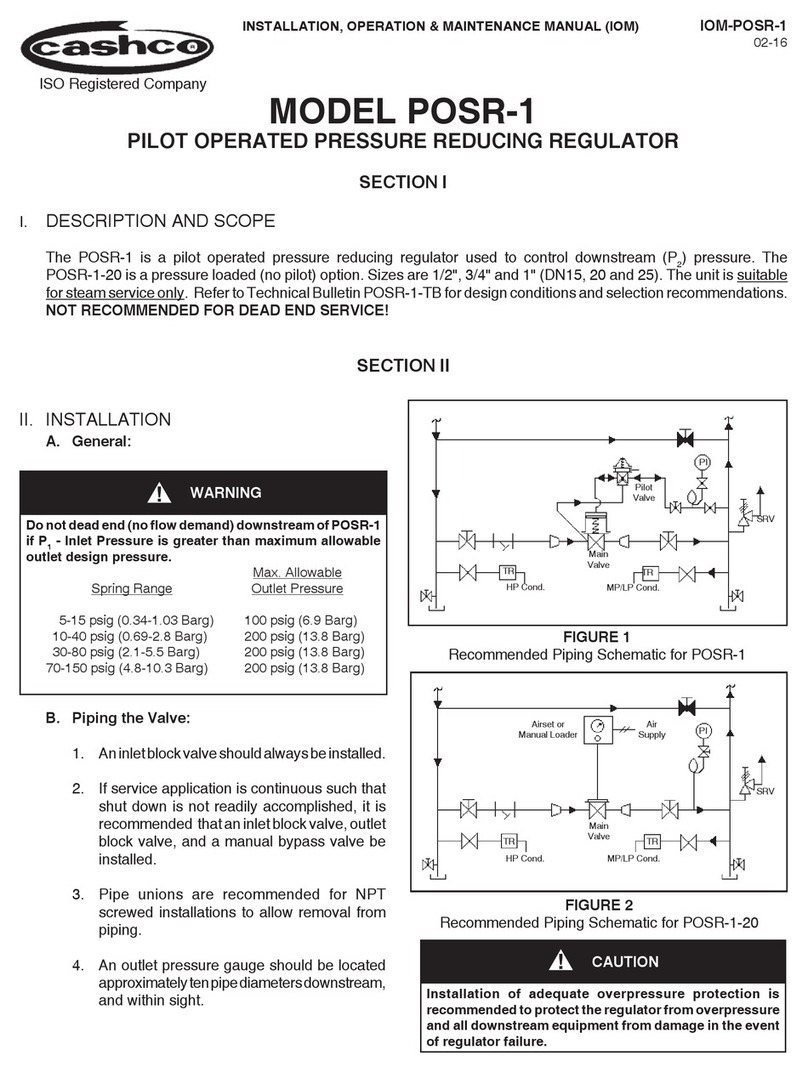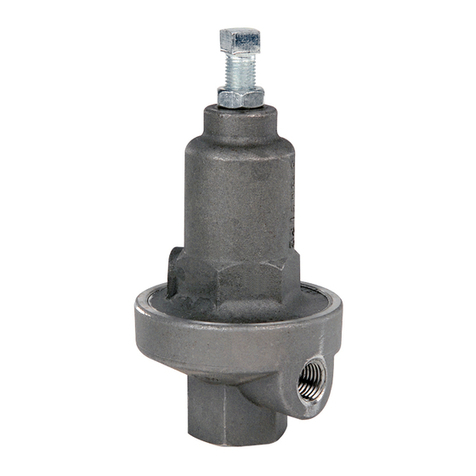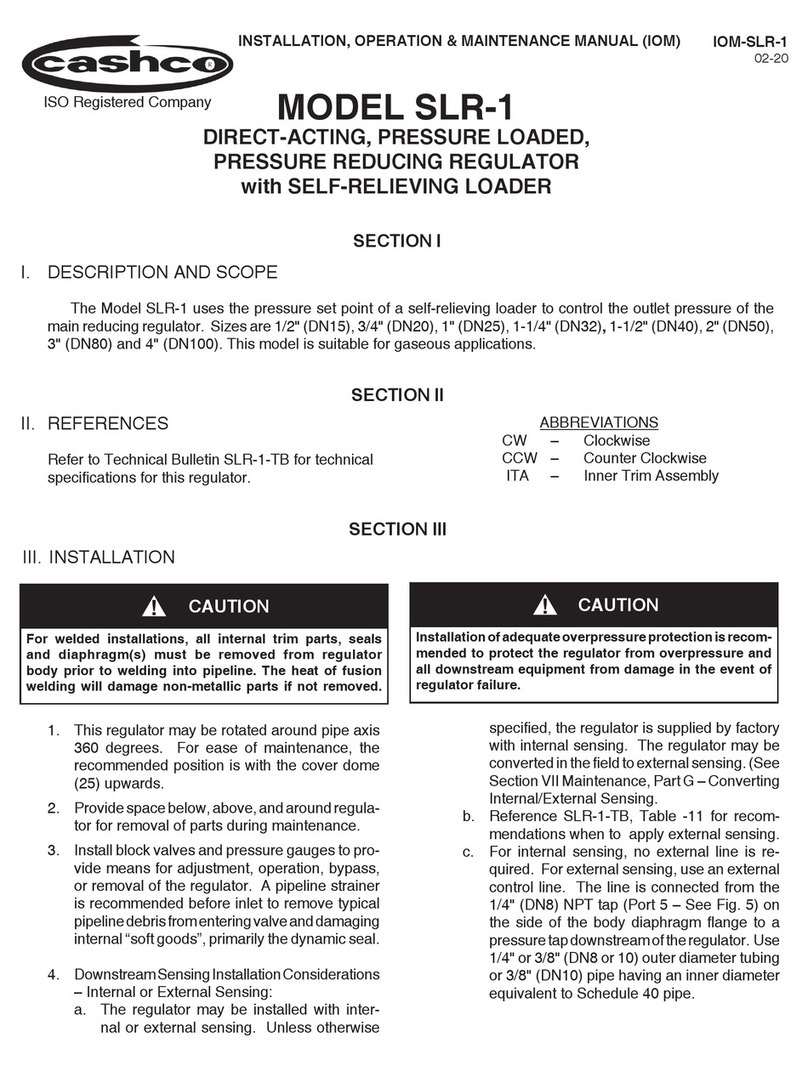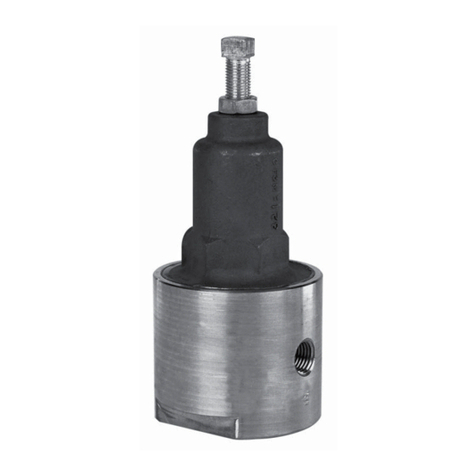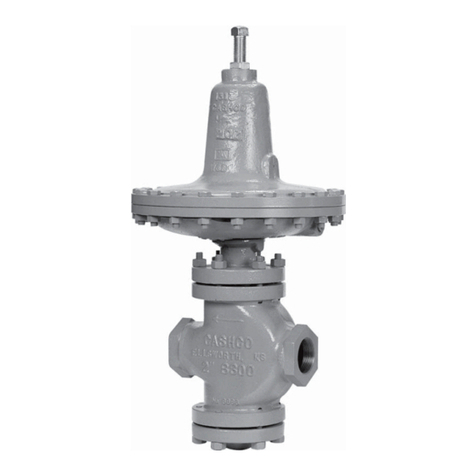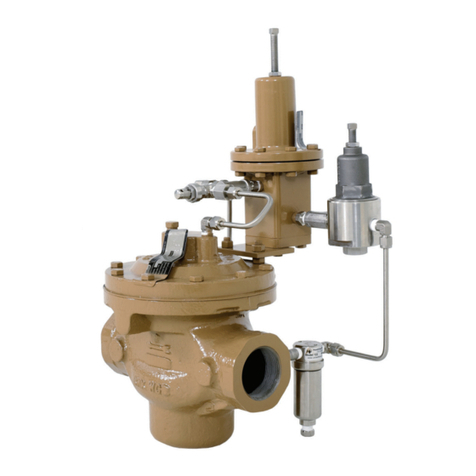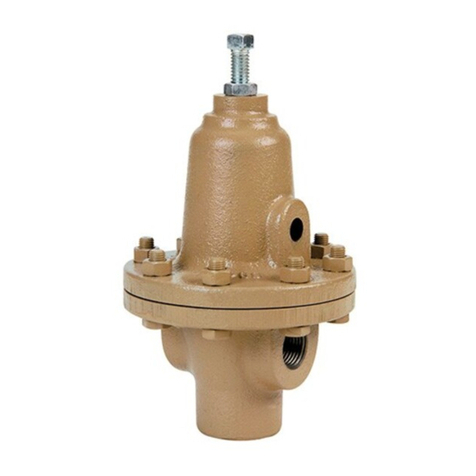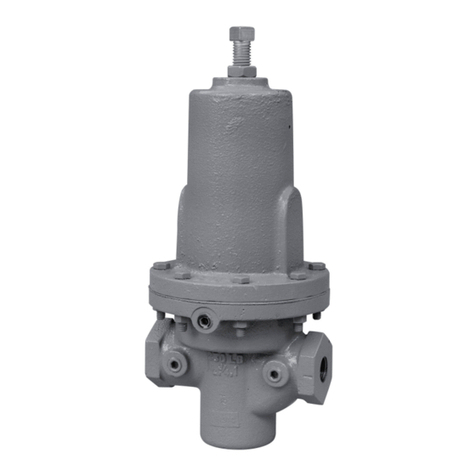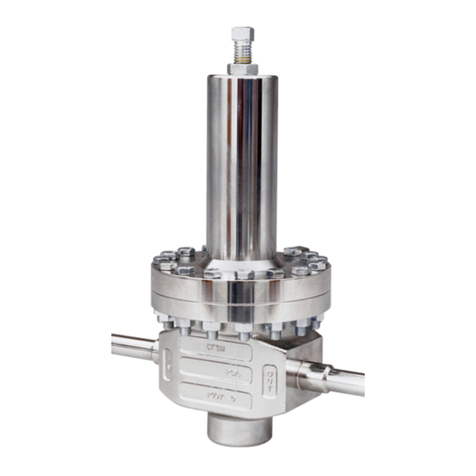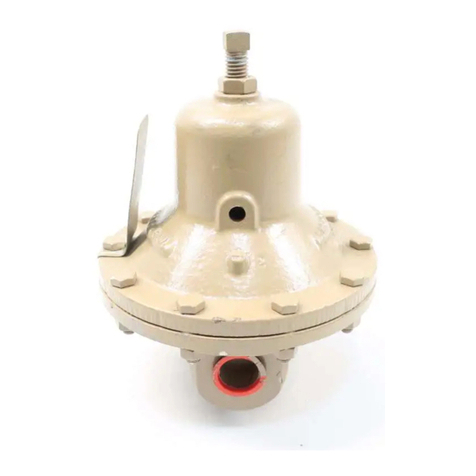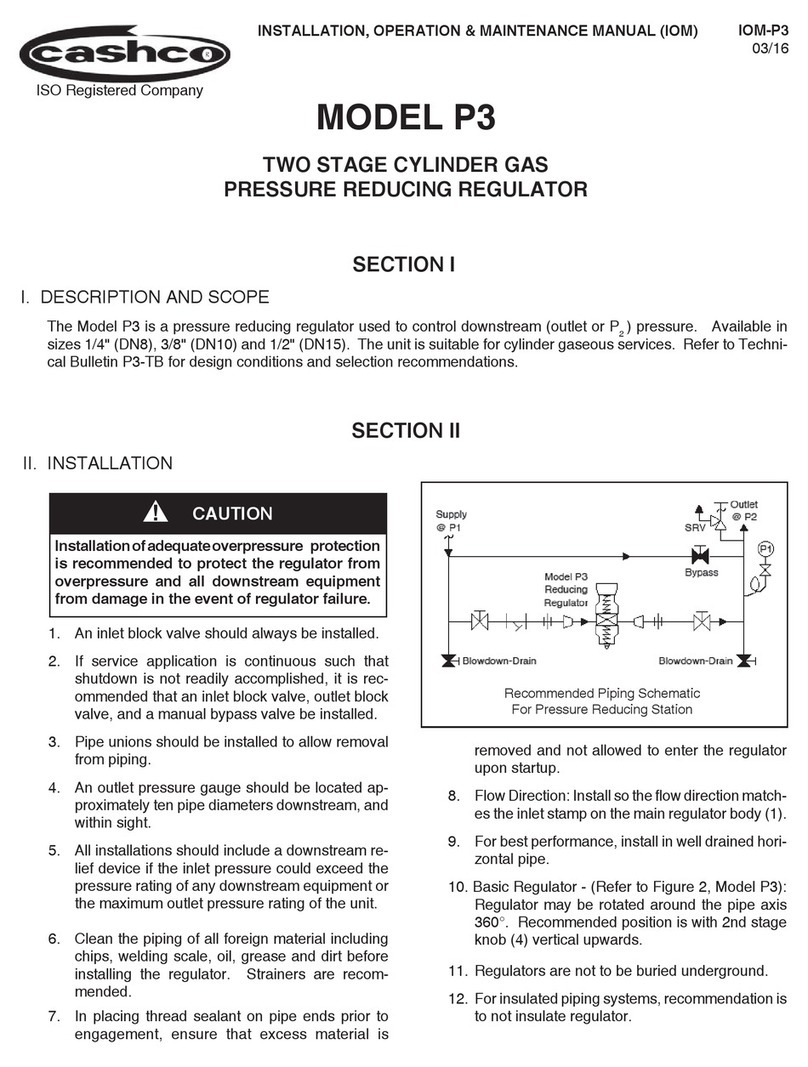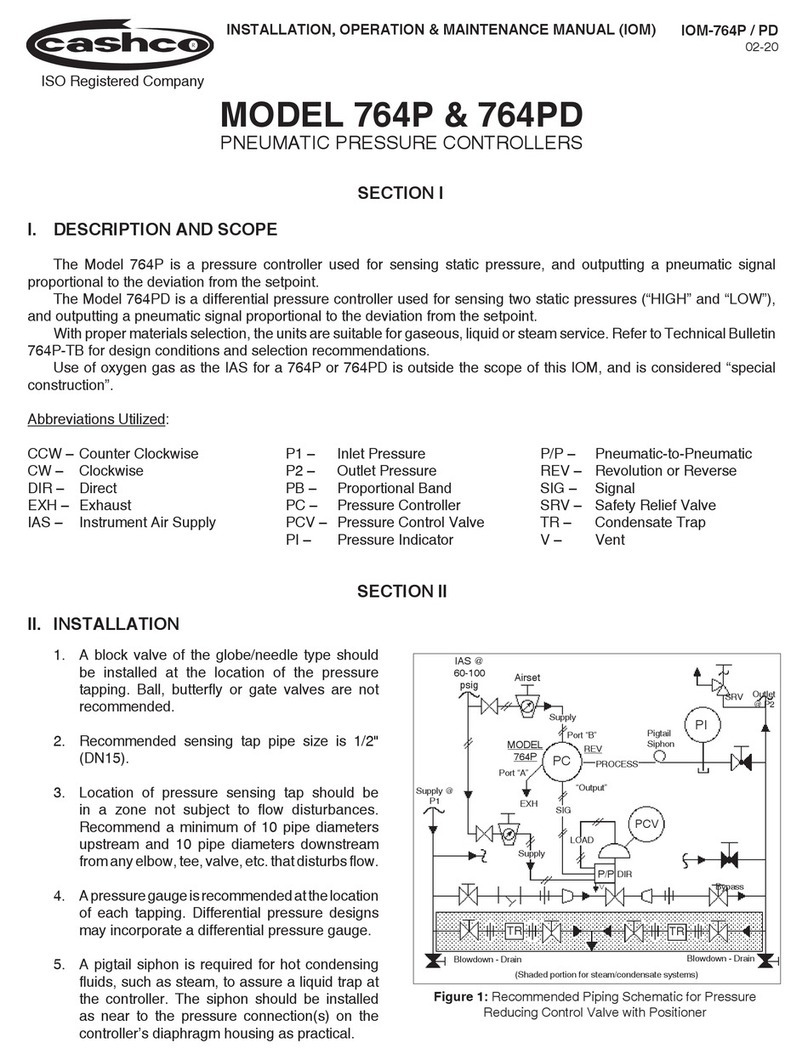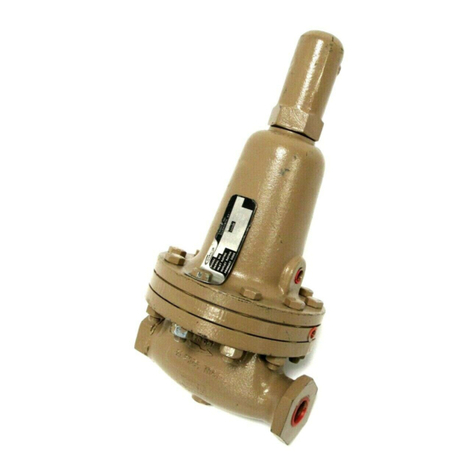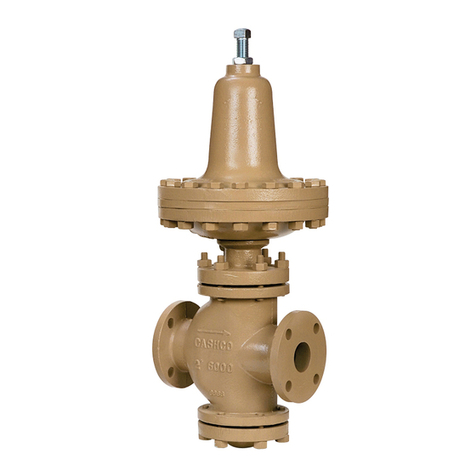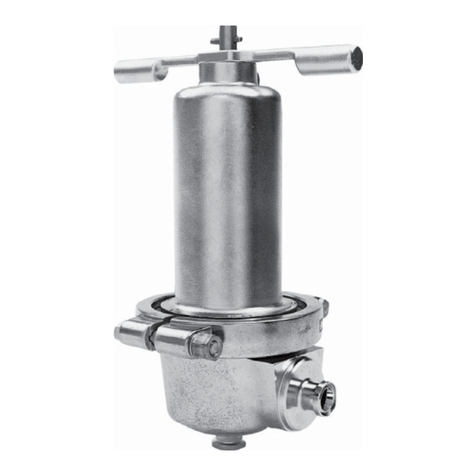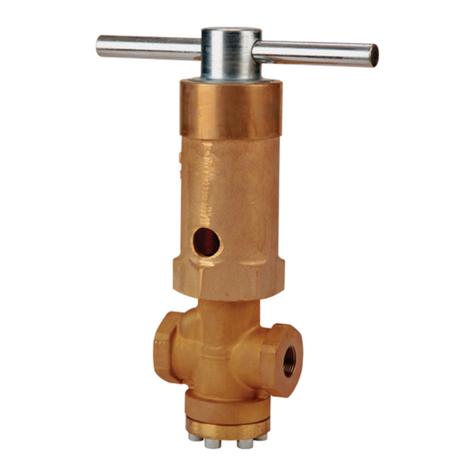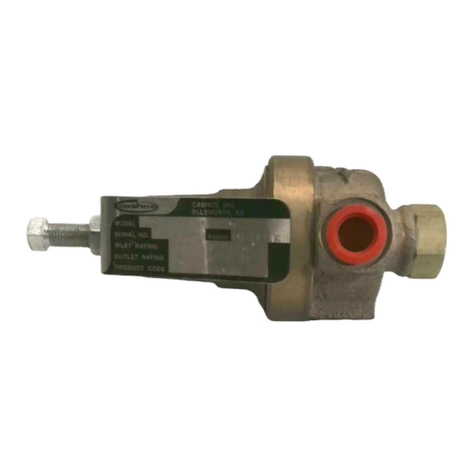
6IOM-1000HP-Differential
25. Check rocker arm shaft (17) for wear and
straightness. Replace if damaged. Reinstall
in body (1) through rocker arm (14). Apply
thread sealant to the rocker arm shaft (17)
threads prior to tightening. Make sure that the
rocker arm shaft (17) enters the support slot
opposite the threaded opening, and does not
align crooked and restrained from full thread
engagement of the rocker arm shaft (17).
Make sure that the rocker arm (14) prongs
that straddle the piston (24) hold the piston
collar (23) against the piston (24); do not allow
the rocker arm (14) prongs to push directly on
the piston (24).
26. Install a new diaphragm gasket (19).
Composition (soft) diaphragms require no
diaphragm gasket. NOTE: Use only gaskets
manufactured by Cashco, Inc., that are of the
same material as those originally supplied.
Substitution may cause improper gasket
compression. It may also adversely change
the diaphragm setting, which will affect the
unit’s performance, i.e. Option 1000-45, non-
asbestos construction utilizes special gaskets.
27. Using small gauge wire approximately 18"
(457 mm) long, form a hook and place the
hook over one prong of the rocker arm (14),
and rotate the rocker arm (14) up until slack
is removed in the mechanism. Secure the
wire through a body (1) flange bolt hole on
the outlet side of the regulator.
28. Firmly holding the outer perimeter, take the
diaphragm subassembly (Step 8) and lower
it down into the body (1) cavity off-center
approximately 3/4"–1" (20–25 mm) and
towards the inlet side of the regulator. When
fully lowered,slide thediaphragm subassembly
horizontally towards the regulator outlet. The
wire of Step 27. should hold the rocker (14) up
to allow engaging of the pusher plate and stud
(13) (with stud nut (10) and stud collar (16)),
so the rocker arm (14) prongs rest directly
on the stud collar. NOTE: DO NOT ALLOW
THE ROCKER ARM (14) PRONGS TO GET
BETWEEN THE STUD NUT (10) AND THE
STUD COLLAR (16). Pull firmly to remove
wire holding rocker arm (14) up.
29. Align diaphragm(s) (20) bolt holes with body (1)
flange bolt holes. Install new diaphragm gasket
(19) on top of diaphragm(s) (20). Visually
center range spring (27) on to pressure plate
(3), place spring button (4) on top of range
spring (27).
30. Aligning the matchmarks, place spring
chamber (2) over the above stacked parts.
Install all bolts (8), nuts (9) and nameplate (28)
by hand tightening. Tighten bolting (8 and 9)
in a cross pattern that allows spring chamber
(2) to be pulled down evenly. Recommended
torques are as follows.
Body Size Bolt Size Metal Diaph 1Comp Diaph 2
1/2" 3/8"-24 25 ft-lb 25 ft-lb
3/4" 7/16"-20 30 ft-lb 30 ft-lb
1"–1-1/4" 1/2"-20 35 ft-lb 35 ft-lb
1-1/2" 9/16"-18 45 ft-lb 45 ft-lb
2" 5/8"-18 45 ft-lb 45 ft-lb
1Minimum recommended torque regardless of gasket
materials. Some gasket materials may require higher
bolt torques to obtain adequate seal.
2Gasket material may “set” with time; a recheck of
torques should be made if the unit has been stored
on the shelf for over 30 days.
NOTE: Never replace bolting (8 and 9) with just
any bolting. Bolt heads and nuts are marked
with specification identification markings. Use
only proper grades as replacements.
31. Reinstall adjusting screw (6) with sealing
locknut (7); install new closing cap gasket
(32); install closing cap (31).
32. Pressurizing the body (1) and spring chamber
(2) to the same level, soap solution test around
bolting (8 and 9), body (1), spring chamber
(2) flanges, closing cap (31) and cylinder
(21) - to body (1) joint for leakage. Use 100
psig minimum inlet pressure to leak test.
Actual service conditions should be used if
in excess of the minimum condition. (NOTE:
Do not pressurize spring chamber without
equal or greater pressure in body registering
on diaphragm(s) (20) underneath side.)
C. Diaphragm Setting Adjustment:
1. In the previous “Sub-Section B., Diaphragm
Replacement”, care was taken to prevent
removal of the stud collar (16) and stud nut
(10). Location of the stud nut (10) is a critical
adjustment for a Model 1000 regulator.
2. Not removing the stud nut (10) will provide
performance equal to original factory
performance when diaphragm(s) (20)
is replaced with like diaphragm(s) (20);
however, if the stud nut (10) is removed, or
a switch is made from metal to composition
(soft) diaphragm(s) (20), or vice versa, the
diaphragm setting should be checked.
